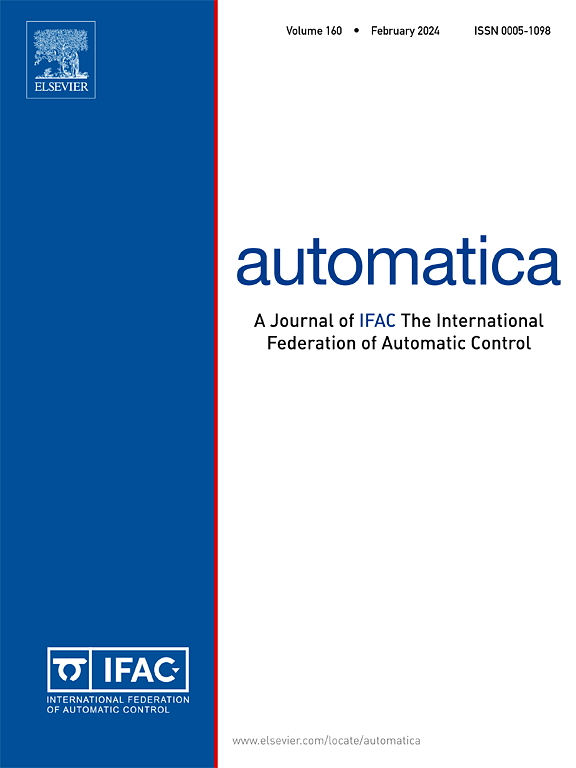Exponential synchronization of networked systems under asynchronous sampled-data coupling
IF 4.8
2区 计算机科学
Q1 AUTOMATION & CONTROL SYSTEMS
引用次数: 0
Abstract
This paper presents a novel approach towards synchronization analysis of nonlinear networked systems, directionally coupled via a generic network topology, under asynchronous, aperiodic sampled-data linear coupling. The synchronization dynamics of the networked system is remodelled as a feedback-interconnection of an operator that captures the continuous-time synchronization dynamics, i.e., in the absence of sampled data transmission, and an operator that accounts for these communication constraints. By studying the properties of this feedback-interconnection in the framework of dissipativity theory, we provide a novel criterion that guarantees exponential synchronization. The provided criterion also aids in deciding the trade-off between bounds on time-varying, uncertain sampling intervals, the coupling gain, and the desired transient rate of synchronization, while taking into account the network topology. The theoretical results are illustrated using a networked FitzHugh–Nagumo neuron system.
求助全文
约1分钟内获得全文
求助全文
来源期刊

Automatica
工程技术-工程:电子与电气
CiteScore
10.70
自引率
7.80%
发文量
617
审稿时长
5 months
期刊介绍:
Automatica is a leading archival publication in the field of systems and control. The field encompasses today a broad set of areas and topics, and is thriving not only within itself but also in terms of its impact on other fields, such as communications, computers, biology, energy and economics. Since its inception in 1963, Automatica has kept abreast with the evolution of the field over the years, and has emerged as a leading publication driving the trends in the field.
After being founded in 1963, Automatica became a journal of the International Federation of Automatic Control (IFAC) in 1969. It features a characteristic blend of theoretical and applied papers of archival, lasting value, reporting cutting edge research results by authors across the globe. It features articles in distinct categories, including regular, brief and survey papers, technical communiqués, correspondence items, as well as reviews on published books of interest to the readership. It occasionally publishes special issues on emerging new topics or established mature topics of interest to a broad audience.
Automatica solicits original high-quality contributions in all the categories listed above, and in all areas of systems and control interpreted in a broad sense and evolving constantly. They may be submitted directly to a subject editor or to the Editor-in-Chief if not sure about the subject area. Editorial procedures in place assure careful, fair, and prompt handling of all submitted articles. Accepted papers appear in the journal in the shortest time feasible given production time constraints.
 求助内容:
求助内容: 应助结果提醒方式:
应助结果提醒方式:


